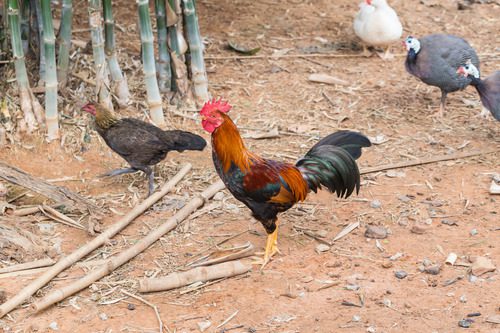Why is My Chicken Limping?
When you notice your chicken limping, it’s understandable to be concerned. Limping can be a sign of various issues, ranging from minor injuries to more severe health concerns. This blog explores common reasons why chickens might limp and how these conditions could affect their health and wellbeing. If you observe any of these symptoms, it’s essential to contact Paws and Claws Animal Medical Center in Dunedin, FL, for professional advice by calling (727) 953-6588.

Common Causes of Limping in Chickens
Injuries
One of the most frequent causes of chicken limping is physical injury. Injuries can occur from mishaps such as a fall, a collision with another chicken, or getting caught on something in their environment. Symptoms of an injury include visible wounds, swelling, or the chicken favoring one leg over the other.
Infections
Infections are another significant cause of limping. Bacterial and fungal infections can affect the feet and legs, leading to swelling, redness, and discomfort. If you notice any pus or unusual discharge, along with limping, it’s critical to seek veterinary care immediately.
Parasites
Parasites like mites and lice can also cause discomfort and limping in chickens. These tiny pests irritate the skin, leading to scratching, inflammation, and secondary infections that can impair a chicken’s ability to walk.
Nutritional Deficiencies
Chickens need a balanced diet rich in vitamins and minerals. Deficiencies, particularly in vitamins such as Vitamin D and minerals like calcium, can lead to weakened bones and joints, resulting in limping. Ensuring your chicken has access to a proper diet is essential for their overall mobility.
Diagnosing the Cause of Limping
Veterinary Assessment
Determining the exact cause of limping in chickens requires a thorough veterinary examination. This might include physical exams, X-rays, or blood tests to pinpoint the underlying issue. Paws and Claws Animal Medical Center offers comprehensive diagnostic services to help determine the cause of your chicken’s limping.
Observation Techniques
Before visiting the vet, observe your chicken’s behavior and physical condition closely. Note changes in activity levels, feeding behavior, and any signs of distress. This information can be crucial for the vet to make a quick and accurate diagnosis.
Preventing Limping in Chickens
- Safe Housing: Ensure that the chicken coop and roaming area are safe and secure. Remove any hazards that could cause injury, such as sharp objects or uneven surfaces. Regular maintenance of the living environment can prevent many common injuries.
- Proper Nutrition: Feeding your chicken a diet that meets all their nutritional requirements is vital for strong bones and healthy joints. Include foods that are high in necessary vitamins and minerals, and consider supplements if recommended by your vet.
- Regular Health Checks: Regular check-ups with a veterinarian can catch early signs of diseases that could lead to limping. Preventative care is often the best way to ensure your chicken stays healthy and active.
Addressing Your Chicken’s Well-Being
Limping in chickens can be caused by various factors, from simple injuries to more complex health issues. Identifying the cause early and seeking professional help is key to ensuring your chicken receives the appropriate care. If you notice your chicken limping, don’t hesitate to call Paws and Claws Animal Medical Center at (727) 953-6588 for expert guidance and treatment. Let’s keep your chickens healthy and happy together!
